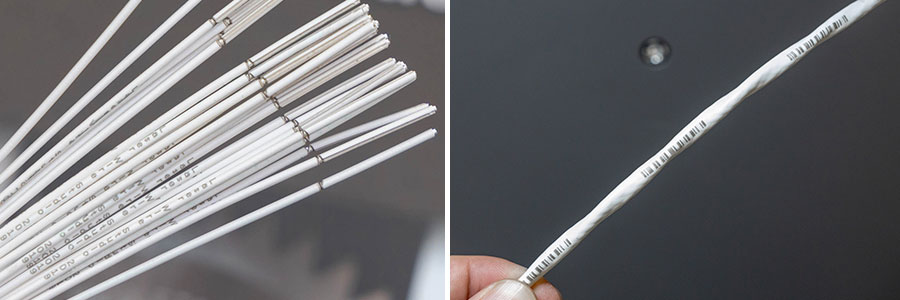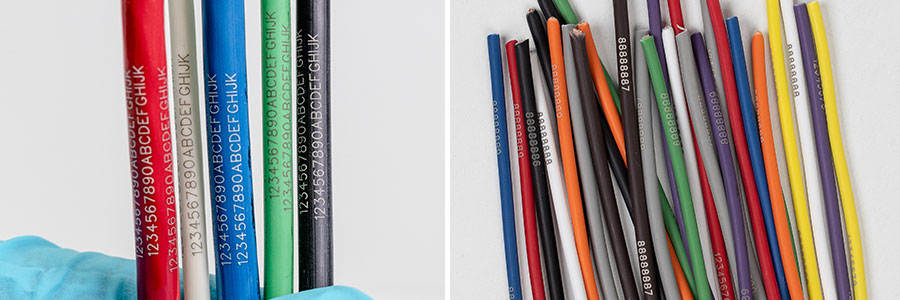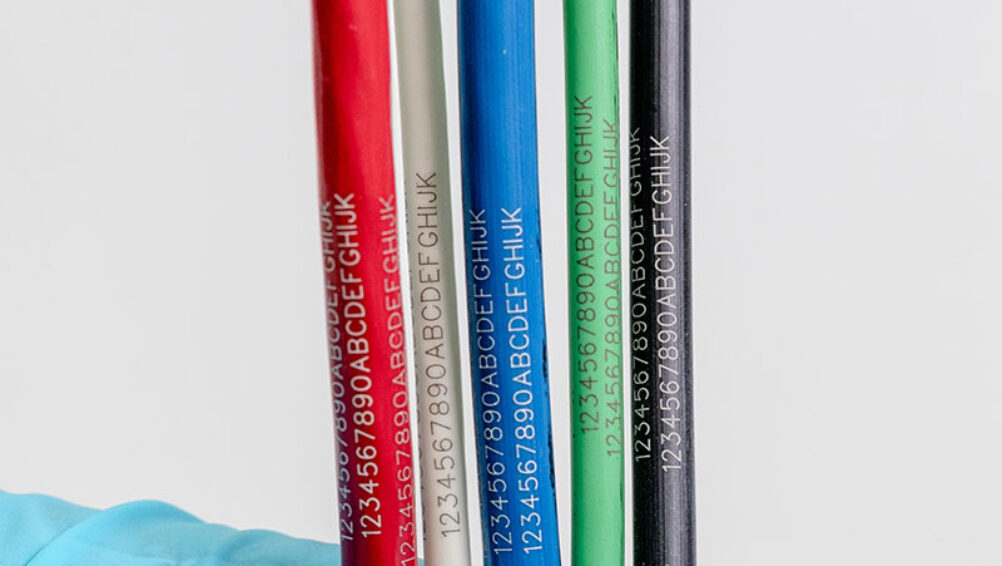When you need to safely and permanently add identifying marks to wire and cable, ultraviolet (UV) lasers are hard to beat. The titanium dioxide typically found in white wire insulation reacts with the UV laser energy to make a black, high-contrast mark on the cable. Other colors of wire insulation can be marked using different chemical reactions. Depending on the insulation material, UV laser marks can be made to be smooth to the touch and extremely durable.


Lasers mark wire at high speeds on a variety of materials. Because they do not use inks or masks, there’s no waste. Laser wire marking is the gold standard for wire manufacturers in the following industries:
- Aerospace. UV lasers are specified in aerospace industry standards as the preferred wavelength to mark white aerospace wires. The chemical interaction of the UV energy with the titanium dioxide does not penetrate too deep into the insulation and has been confirmed to have no effect on the performance of the wires.
- Medical. Laser wire marking is clean and can be adapted to medical-grade cables.
- Catheter marking. The process for marking catheters is similar to marking wires. Depending on the catheter material, smooth marks (not raised from the surface) can be achieved.
- Other industries. Lasers are well-suited for a variety of other applications such as marking telecom/datacom, automotive, transportation, military and general electronics wires.
At CMS Laser, we have extensive expertise designing and manufacturing laser wire marking systems and equipment. Our engineers are available to help you create a custom system with reel-to-reel, tray-based or other configurations for loading and unloading wire. Our real-time on-the-fly (OTF) marking can process wire up to 600 feet per minute or higher, depending on insulation material and data mark requirements. This can be achieved via encoders attached to the motors that pull the wire through the system, or the encoders can be attached directly to your extruder. Our advanced machine vision technology can locate the wire to ensure correct positioning and can track elements on the wire that cannot be marked, such as stripes, and direct the laser to mark between them.
Keep in mind that some types of insulation materials or wire colors may not react well to UV wavelengths and may not produce the desired contrasted mark. Our Applications Lab can work with you to suggest the correct laser wavelength for your specific job.
In addition, our specialists can also design UV laser wire marking machines that:
- Handle more than one diameter.
- Include wire stripping and cutting.
- Process serialized data such as distance marks, date codes and, in some cases, bar codes. Serialization can be customized as needed to change along the wire and/or between different wire types.
To learn more about laser wire marking systems, view our product page.
For more information, contact us.

